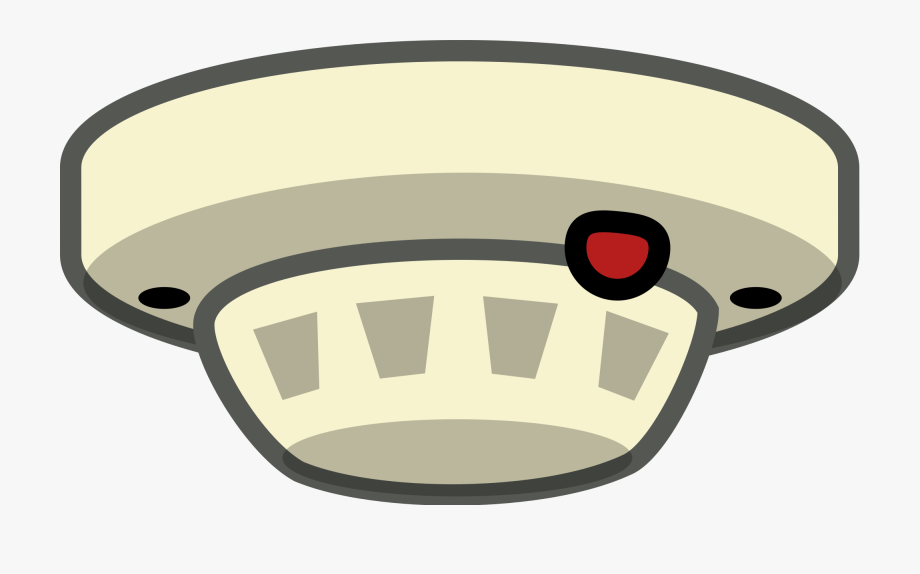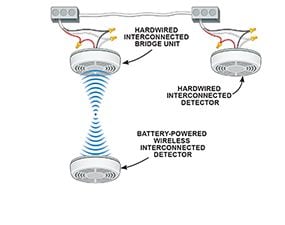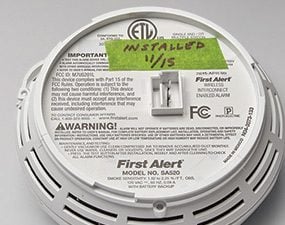Welcome Back Readers! We hope you had the most amazing 2019 Holidays. In this blog, we want to educate you, the user, on how to maintain a smoke alarm or smoke detector in your home.
We have the DIY experts of The Family Handyman Magazine, here to help us with some tips on how to make sure your home is safe by maintaining your smoke alarm.
Every year people die because their smoke detectors didn’t go off during a fire. That’s usually because the batteries were dead (or had been removed to stop false alarms) or the detector was past its useful life or was located where occupants couldn’t hear the alarm. This article will tell you how to check your detectors and replace them if necessary. We’ll also help you understand the latest technology-which has improved dramatically in recent years-so you can choose detectors that best protect your home and family.
Do your present detectors work?
It’s really simple to test your smoke detectors to make sure they’re working. Just press the test button and the alarm should sound. If it’s a battery-powered alarm and doesn’t sound off, change the battery and retest it. If it’s a hardwired unit and doesn’t work, replace it immediately. If they do sound off, check the date on the label so you’ll know when to schedule replacements.
Smoke detectors are good for only 10 years. Some detectors let you know they’re due for replacement with an end-of-life chirping sound. But others provide no warning at all-they simply die in silence, leaving you totally unprotected. If yours doesn’t have a ‘replace by’ sticker on the outside, rotate the body of the detector and detach it from its base. Then look for a date on the inside label or embossed in the plastic. If the detector is 10 years old or more, or yours doesn’t have a date code, replace it now, even if it passed the button test.
Two things to check before you buy replacements
- Are your detectors hardwired? Rotate the detector body to release it from its base and pull it away from the wall. If you see wires, it’s a hardwired detector and must be replaced with another hardwired unit-never replace a hardwired detector with a battery-powered detector.
- Are your detectors interconnected? Hardwired interconnected smoke detectors all sound at the same time, even if only one detector senses a fire. You can tell if they’re interconnected by counting the number of wires in the detector’s electrical box. If you have an older home (pre-1989) with hardwired detectors, chances are yours aren’t interconnected. Confirm that by counting the number of wires connected inside the electrical box (top photo). Starting in 1989, building codes required all hardwired smoke detectors to interconnect. Interconnected hardwired detectors connect to three wires inside the electrical box (bottom photo). Knowing whether yours are interconnected or not will help you buy the right replacement units.
Get interconnected without wires
Hardwired and battery-powered wireless interconnected detectors communicate with one another via radio frequency (RF) signaling (not your home’s Wi-Fi). So you can retrofit your existing hardwired non-interconnected detectors with wireless interconnected units and even add new wireless detectors to build a safer fire detection system, all without running any new wires.
If your home already has hardwired interconnected detectors and you want to add more battery-powered detectors, replace one of the hardwired interconnected detectors with a bridge unit. Then install battery-powered wireless interconnected detectors. If you have any non-interconnected battery-powered detectors, replace them with the newer battery-powered wireless interconnected style.
Dual-sensor technology – the best choice for bedrooms
Almost 90 percent of all homes are outfitted with an ionization-type smoke detector. Ionization detectors respond best to fast-moving, flaming fires and are cheaper than photoelectric units. But photoelectric detectors respond faster to slow, smoldering fires. Since you never know what type of fire you’ll encounter, all fire experts now recommend installing both sensing technologies on each level in your home and in all sleeping areas.
Dual sensor (ionization and photoelectric) detectors cost about $50 each and work great for basement and main floor hallway applications or where you don’t want to mount multiple detectors on your walls or ceilings. However, for bedrooms and hallways outside bedrooms, many experts recommend installing two multifeatured detectors: a photoelectric detector with battery backup and an escape light and a second unit with an ionization and carbon monoxide (CO) sensor. That setup provides both types of fire detection, along with battery backup, CO protection and a light to help guide you through darkness and smoke.
For kitchen and hallway locations near bath areas, stick with photoelectric detectors only. They can handle steam and cooking smoke without triggering false alarms.
Talking alarms tell you where the fire is
Some new models allow you to program the location of each detector. So if one of the programmed detectors senses a fire, all detectors announce the fire’s location in a clear prerecorded voice (‘Fire in the basement’). That way you can choose the fastest and safest evacuation route.
Wi-Fi status and shutoff
Wi-Fi-enabled units and smart device apps allow you to monitor your home from anywhere. Check the CO reading and smoke detector status, receive alarm notifications and even shut off a false alarm using an app.
Ionization detectors have gotten smarter
They pack sophisticated software and electronics to reduce false alarms. But they’re not foolproof, so don’t install them near kitchens or bath areas where they’re most easily fooled.
Smoke detector replacement tips
We hope you found this article as informative as we did. Spread the word! Let’s protect today for a safer tomorrow!
Answer to last Blog’s The Riddler: The letter M
Answer to last Blog’s The Joker: It was Soda-Pressing (so depressing)
The Riddler: The more there is, the less you see. What is it?
The Joker: Why couldn’t the leopard play hide and seek?


